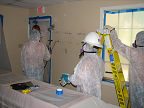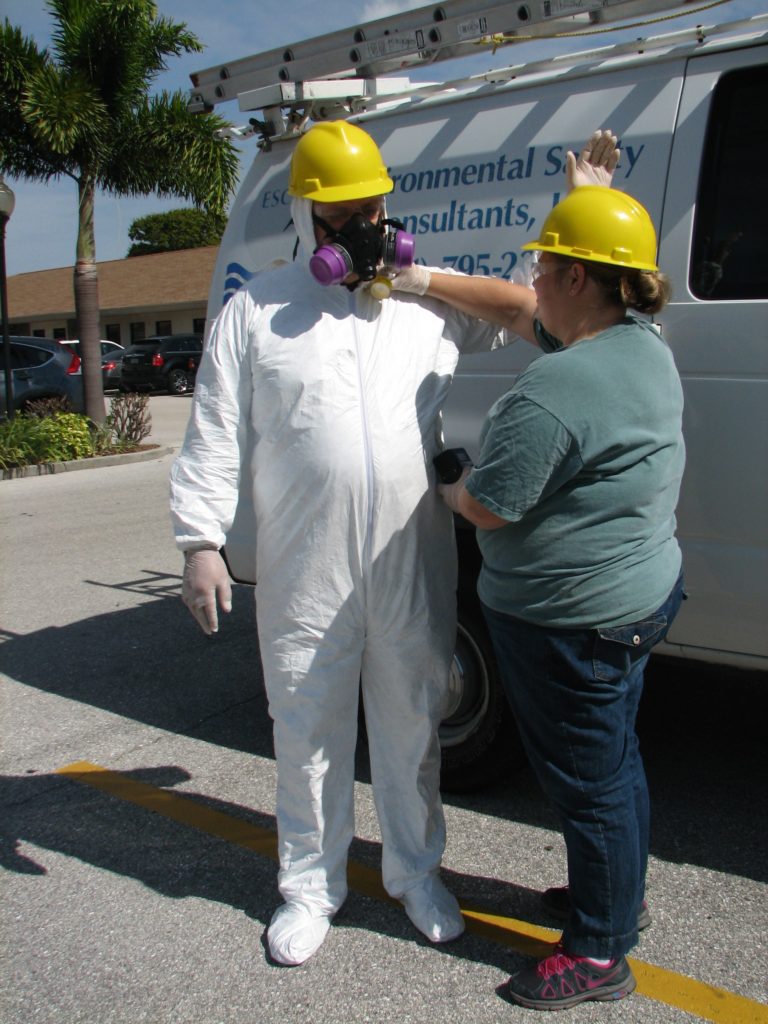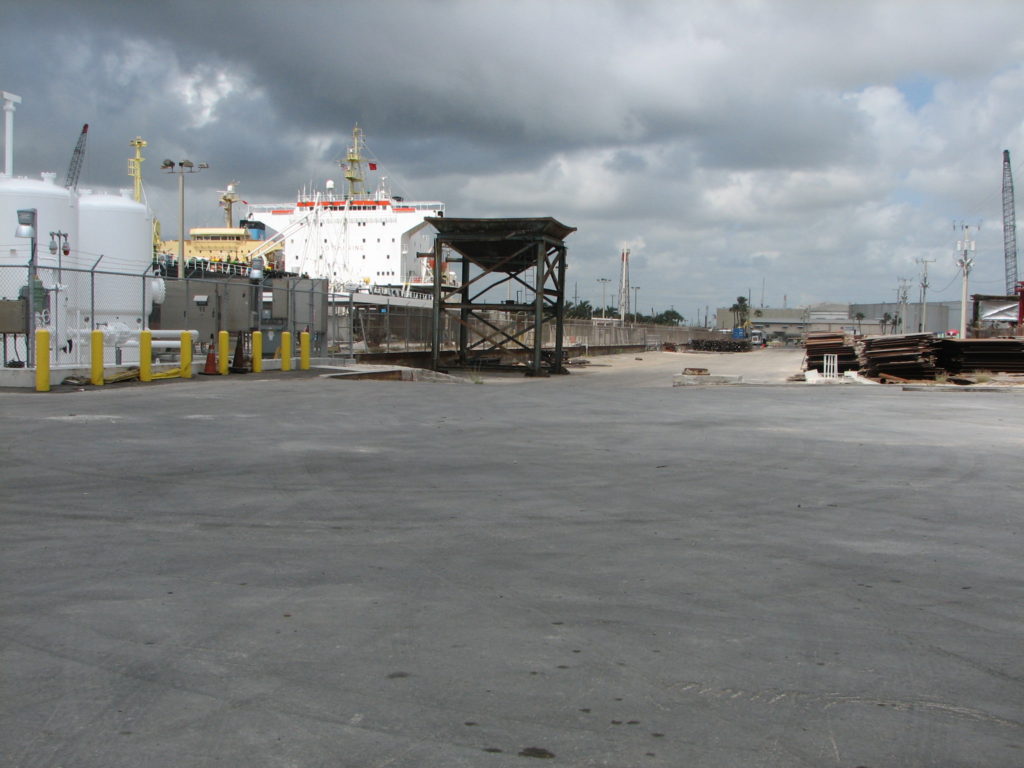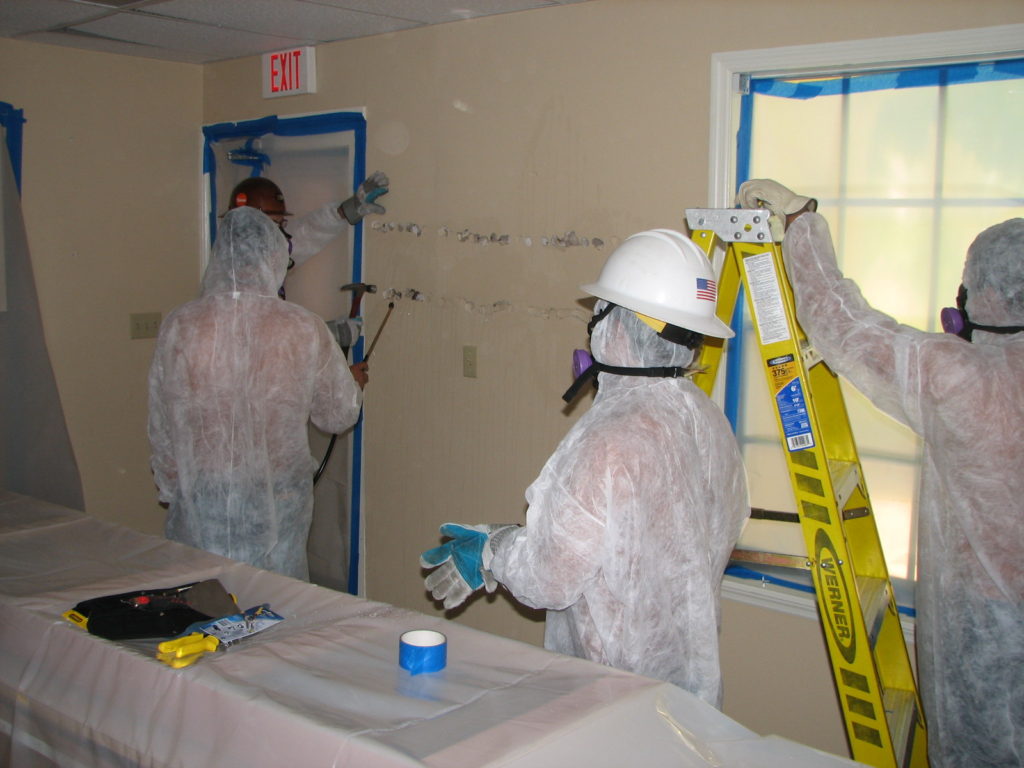Asbestos Point Counting Defined
Point counting is a detailed laboratory method that determines the actual asbestos content of friable building materials. It shows if the content is greater than 1%. The federal asbestos regulations for building renovations and demolitions allow point counting.
The actual regulation is found in Chapter 61.145 of Title 40 of the Code of Federal Regulations, otherwise known as 40 CFR 61.145. Chapter 61 contains the NESHAPs rules (National Emission Standards for Hazardous Air Pollutants). NESHAPs covers quite a few hazardous air pollutants and asbestos is addressed in Subpart M of Chapter 61. NESHAPs is enforced by the U.S. Environmental Protection Agency (EPA, www.epa.gov). State agencies such as the Florida Department of Environmental Protection (www.floridadep.gov) also enforce it.
When to Asbestos Point Count
Do point counting when the material is friable and the initial results are less than 10%. This more detailed procedure tightens the statistics, providing a more accurate concentration.
Options
What are the options? First, assume the initial results are correct and the material contains more than 1% asbestos. Next, abate it prior to disturbance (renovation or demolition). Otherwise, point count it.
 The decision involves money. The cost of point counting a few samples is a few hundred dollars. But, the cost of abatement is a few thousand dollars. In either case, removing the material can cause an inhalation hazard for the workers and occupants. This is true even for asbestos concentrations less than 1%. That number is a regulatory number, not a safe, no exposure number.
The decision involves money. The cost of point counting a few samples is a few hundred dollars. But, the cost of abatement is a few thousand dollars. In either case, removing the material can cause an inhalation hazard for the workers and occupants. This is true even for asbestos concentrations less than 1%. That number is a regulatory number, not a safe, no exposure number.
Decision
Like a lot of construction issues, point counting is a business decision. The building owner and occupants make the decision, with the building contractor, licensed asbestos consultant, and licensed asbestos contractor. Consider the potential outcomes. For example, the owner and occupants may say they want it removed properly by a licensed asbestos contractor whatever the concentration is. Alternatively, they may not care about the potential exposure and opt for the building contractor to carefully remove it it if it contains less than 1% asbestos.
 So there is a discussion of point counting building materials for asbestos. If you need any assistance, ESC (www.escflorida.com) is here. On staff, we have a Florida Licensed Asbestos Consultant and board Certified Industrial Hygienist (CIH). ESC has been providing asbestos consulting services to our clients for over thirty years. We have the credentials and experience to help you with your asbestos needs. Our firm is just a telephone call (800-226-1735) or an e-mail away (escinc@verizon.net). Contact us today!
So there is a discussion of point counting building materials for asbestos. If you need any assistance, ESC (www.escflorida.com) is here. On staff, we have a Florida Licensed Asbestos Consultant and board Certified Industrial Hygienist (CIH). ESC has been providing asbestos consulting services to our clients for over thirty years. We have the credentials and experience to help you with your asbestos needs. Our firm is just a telephone call (800-226-1735) or an e-mail away (escinc@verizon.net). Contact us today!

 Well, the fuss with asbestos all comes down to health risks. Some of the potential outcomes are very serious – lung cancer, mesothelioma (i.e., cancer of the lining of the chest cavity), and asbestosis (a pulmonary obstructive disease that eventually puts such a strain on the lungs and heart, that the patient dies from cardiac arrest). The primary route of entry for these extremely small asbestos fibers is inhalation. Theoretically, these diseases can be caused by one exposure episode. However, the greater the dose, the greater the disease. And, finally, the diseases do not show up for ten to thirty years after the exposure. That is a very long latency period.
Well, the fuss with asbestos all comes down to health risks. Some of the potential outcomes are very serious – lung cancer, mesothelioma (i.e., cancer of the lining of the chest cavity), and asbestosis (a pulmonary obstructive disease that eventually puts such a strain on the lungs and heart, that the patient dies from cardiac arrest). The primary route of entry for these extremely small asbestos fibers is inhalation. Theoretically, these diseases can be caused by one exposure episode. However, the greater the dose, the greater the disease. And, finally, the diseases do not show up for ten to thirty years after the exposure. That is a very long latency period. banned from all materials in the United States. It has been banned in five to seven materials and it is still found in building materials being imported today. It is not always listed on the material, sometimes a label states that a product is non-asbestos when it is not, and sometimes it is labeled as asbestos free, but chrysotile (the most common type) is listed on the ingredients).
banned from all materials in the United States. It has been banned in five to seven materials and it is still found in building materials being imported today. It is not always listed on the material, sometimes a label states that a product is non-asbestos when it is not, and sometimes it is labeled as asbestos free, but chrysotile (the most common type) is listed on the ingredients). Finally, workers who install, remove, or demolish it in buildings are at risk. That is why EPA requires testing for asbestos before all renovations and demolitions of most buildings before the work is started. If asbestos is present, certain abatement procedures will be required before the construction or demolition work begins.
Finally, workers who install, remove, or demolish it in buildings are at risk. That is why EPA requires testing for asbestos before all renovations and demolitions of most buildings before the work is started. If asbestos is present, certain abatement procedures will be required before the construction or demolition work begins.